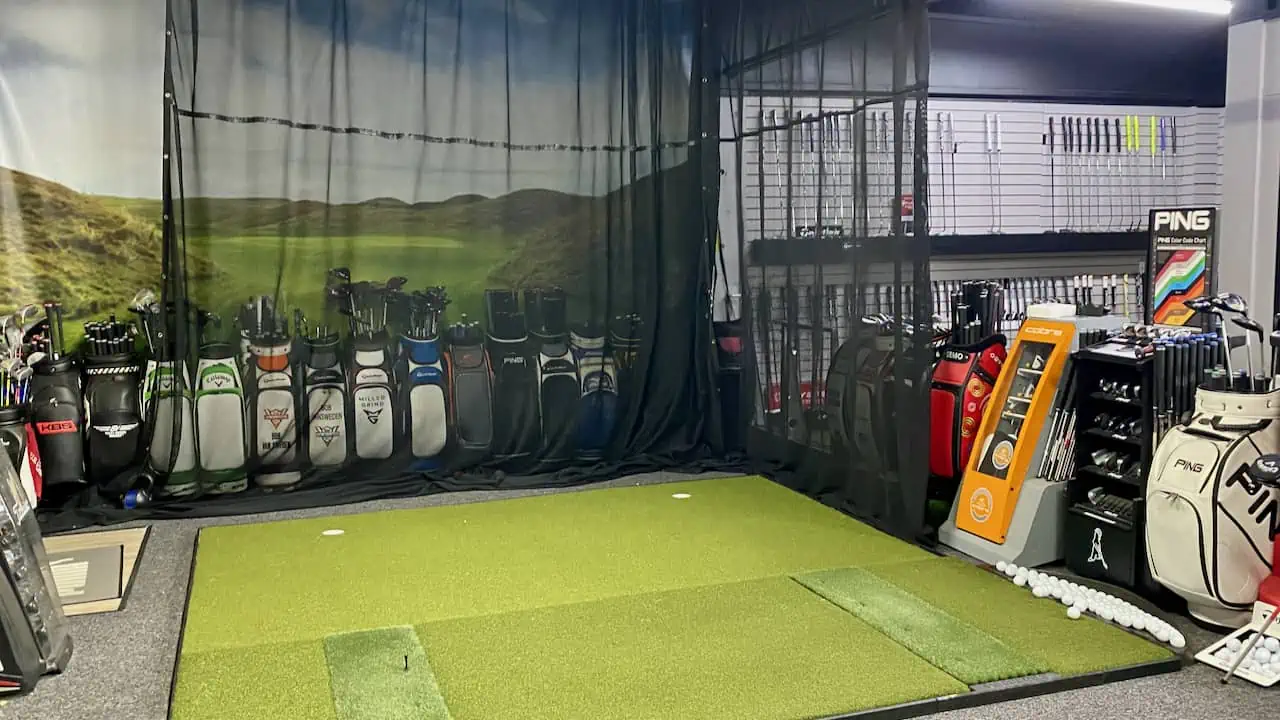Table of Contents
Getting fitted for golf clubs helps you identify the optimal swing weight, clubhead shape, shaft mass, length, and flex for your golf swing. With all its perks, it is a costly endeavor, and in this post, I reveal how much do fitted golf clubs cost relative to off the shelf models.
At the end of this guide, you will know what fitted golf clubs are and how to find the right fitter. Despite the increased cost of a custom set of golf clubs, I reveal tips to help you suppress your expenses and still enjoy the benefits of the service.

What is a Golf Club Fitting?
Golf club fitters analyze video footage and data metrics of your swing to identify the optimal specs for your bag. Custom options range from a full bag fitting down to individual golf clubs. Naturally, the price rises with every club you are fit for.
Here is a list of the different types of golf club fittings to see which offer will best solve your current golf course challenges.
Types Of Club Fittings
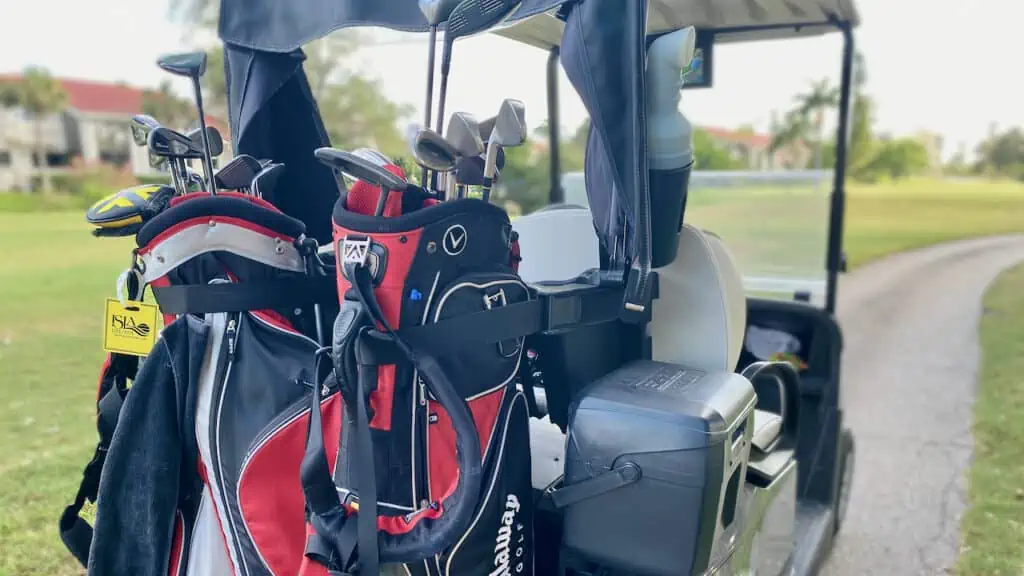
Full Bag Fitting
A full bag fitting helps you determine the best 14 golf clubs in your bag. If you have never been fitted before, it is worth considering to receive your optimal shaft and club head specifications. Although all golfers can benefit from the insight, I find a full bag fitting most useful for high handicappers serious about improving their game.
A fitting will not improve your score outright. However, it will equip you with the tools to excel from tee to green.
🏌️♂️ Related: How to Build or Repair Your Own Set of Golf Clubs
Putter Fitting
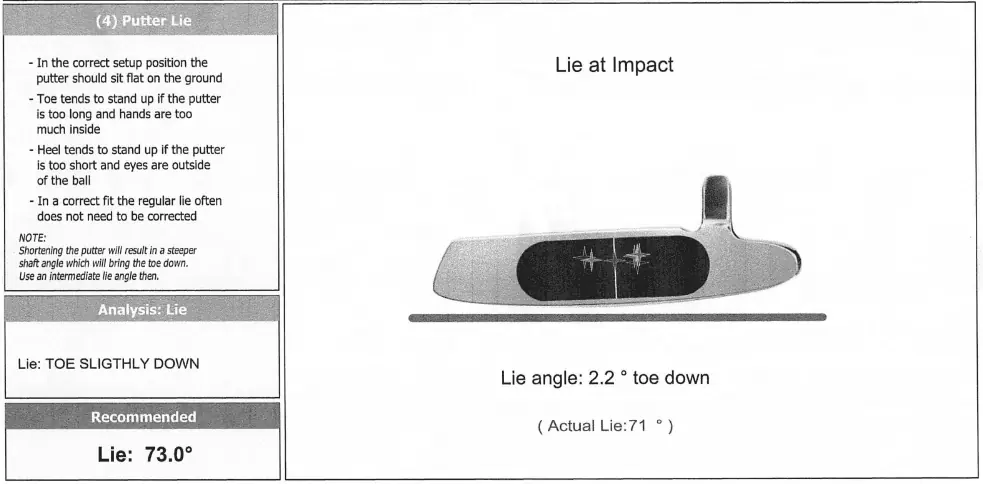
A putter fitting focuses on squaring the putter face at impact to optimize contact, roll, and accuracy. I feel it is an underrated fitting often neglected by amateur golfers focused on distance over short game precision.
A custom golf club fitter identifies your stroke path and strike consistency to find the correct putter head and hosel. Before I had a putter fitting, I always played a short hosel putter with ample toe hang, causing me to miss my putts to the right. Post my fitting, I now know I have a mainly straight stroke, so I use a plumber’s neck design to drain more putts.
Irons Fitting
I recommend an irons fitting to all golfers. If you only have the budget for one category of custom fitted golf clubs, I suggest irons. Improving your accuracy on approach improves your chances of carding more pars and birdies.
An iron fitting determines the type of irons you should play along with the ideal shaft, offset, and launch profile.
For example, a slower swing speed senior player is likely more compatible with easier launching game improvement irons. In addition, a lighter swing weight, senior flex graphite shafts, and a flexible clubface provide the boost needed for an elevated launch.
Golf Wedge Fitting
Wedge fitting is among the least popular practices despite the club’s importance on the golf course. Golf wedge fitters work to identify the best lofts, sole grinds, launch profile, and shapes for all your wedges.
Your optimal wedges are determined by your attack angle, common course conditions at your local golf club, and the gaps you need to bridge. Although a fitter can discover a suitable grind for your attack angle, it may not perform in all turf conditions, as the sole grind is not a one size fits all approach.
You may hit your full pitching wedge shots with a shallow angle of attack while swinging steeply on chip and flop shots. A mid or low-bounce wedge may suit your pitching wedge shots, while a high-bounce design works for sand and lob wedge shots.
Driver Fitting
A driver fitting is purposed to guide the player to increased accuracy, carry, and total distance. The fitter aims to identify your optimal loft, the center of gravity, low spin, offset, shaft length, and flex. These factors enhance your clubhead speed on the downswing for maximum energy transfer into contact.
As a teenager, I utilized an 8-degree TaylorMade R5 Dual driver with a stiff flex. When I connected the ball, I generated significant distance, but most of the time, I delivered low-spinning drives that went nowhere.
After undergoing a fitting, I learned that a 10.5-degree, regular flex, D3 swing weight driver serves me best. Despite my disdain for the lack of workability, I produce the most accurate results with an offset driver club head.
Fairway Wood and Hybrid Fitting
A fairway wood fitting aims to bridge the loft gaps between your driver, hybrids, or long irons while promoting a consistent launch, flight, distance, and accuracy. Club fitters will analyze which profile encourages the best launch, elevated ball flight, and impressive carry distance.
In my case, I discovered that my previous 13-degree 3-wood with a stiff shaft was ill-suited to my swing speed. My current clubs include a 15-degree 3-wood with slight draw bias and a regular flex shaft with medium torque. The setup gives me the energy transfer, ball speed, and launch I need for optimal long-game results.
Custom Fitted Clubs vs Off the Shelf
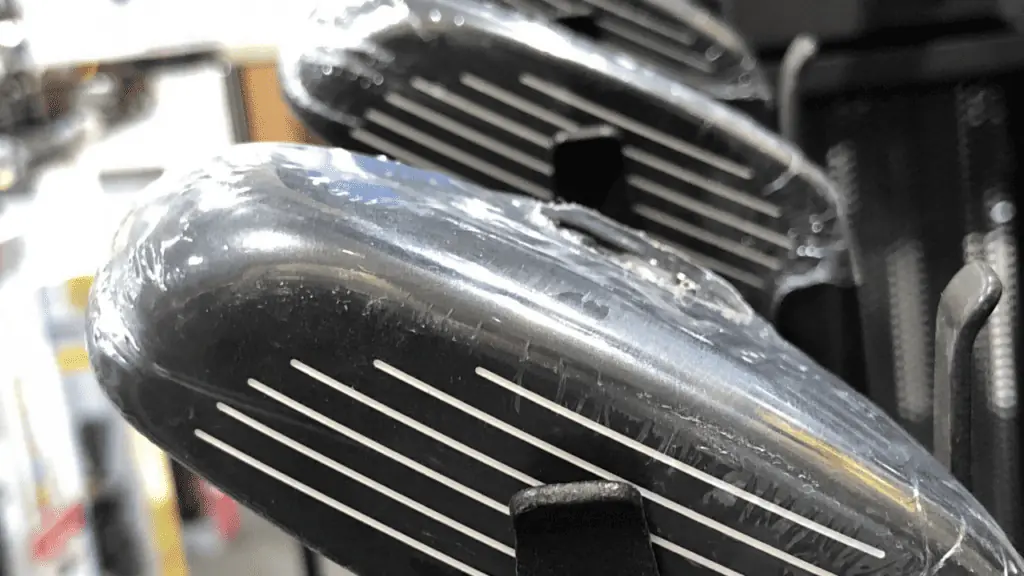
Fitted golf clubs are tailored to your needs to ensure they produce optimal results from tee to green. However, it is a more costly endeavor than acquiring off the shelf clubs. You can find a trove of off the shelf items for low, mid, and high handicappers, but the shafts, club heads, and performance features might not match your swing.
I personally purchase golf clubs off the shelf because I know precisely what I am looking for without the guidance of a fitter. However, when you are oblivious to your optimal settings, I suggest a fitting before you start shopping.
Finding the Right Professional Club Fitter
A raft of club fitting options exists, from simple analysis to club recommendations and coaching sessions. GolfTec is a popular option in major centers and offers the complete package. It starts with an analysis of your golf swing for $150, after which they attempt to upsell you on lessons moving forward.
Golf Galaxy also avails qualified PGA Instructors to improve your swing mechanics. I like their abundance of clubs to match your swing and am under no illusions that the objective of the fitting is to upsell coaching sessions or golf clubs.

What Can You Learn from a Custom Fitting
1. Shaft Flex And Weight
A regulation custom fitting provides insight into your ideal shaft flex and weight for your swing. In my first fitting, I discovered that my shafts were too stiff and heavy for my swing. This feature reduced the speed of my club heads, prompting a loss of energy transfer at impact.
The results were a loss of ball speed, increased spin, and shorter distance across the board. After my fitting, I switched to a regular flex shaft which was 3 grams lighter in the irons and 4 grams in the woods.
I now launch the ball higher and generate consistent carry distance compared to my results with a stiffer shaft.
Read More: How To Apply Lead Tape To Increase Golf Club Weight
2. Shaft Length
Most fitters only tend to alter the golf club length if a standard length shaft heavily impacts your posture and club path. For example, an additional ½ inch will help a taller player produce a neutral posture at address and enjoy better control of the club from takeaway through impact.
Swinging with clubs too short or long for your setup impacts your club path, attack angle, clubface angle, and clubhead speed.
3. Clubhead Design
I initially played blade irons growing up due to the lack of options at my local golf store. However, after experiencing a fitting, I found myself delivering consistent launch, flight, and distance with players’ distance irons.
The marginally larger head with a cavity made a significant difference, providing maximum leniency on all strikes. The oversized and slightly offset clubheads provided superb stability at contact and restricted my workability to promote straighter shots. After witnessing the change in my consistency, I switched to player distance irons and never looked back.
4. Loft
A session with a club fitter provides insight into the desirable lofts through the bag. In my case, the most significant challenge arose with my woods and wedges. I discovered my 8-degree driver was excessively low for my swing, and I had to switch to a weaker 10.5-degree loft that was far easier to launch.
Before getting fitted golf clubs, I swung a 13-degree 3-wood, which launched low and did not travel far. The club fitter suggested switching to a 15-degree option, which offered a towering launch and impressive carry distance.
5. Clubface Contact
Club fitters analyze precisely where your clubface is striking the ball. Professional fitter John Jacobs explains that shots out of the heel often stem from an upright lie angle, prompting the ball to travel left for right-handers. Conversely, a flat lie angle encourages contact with the toe of the clubface, sending the ball to the right.
If you’re consistently striking out of the toe of the club face, custom golf club fitters will adjust the lie angle to a standard position. This slight change will encourage contact with the center of the clubface for enhanced energy transfer, launch, and distance.
6. Gapping
An area most amateurs neglect is gaps in your bag. A club fitter works with you to eliminate gaps and ensures you cover every distance in your bag. For example, I hit a 5 wood as far as my 3 wood because I find the former easier to swing, control and launch.
If I carry a 3 wood and 5 wood, I’m effectively wasting space in my bag. Since they both travel similar distances, I only opt for the 5-wood. This frees up a slot in my golf bag for an additional wedge which works wonders around the green.
⛳️ Related: What Golf Wedges Should I Carry in My Golf Bag?
7. What to Bring with You
- Golf shoes
- Golf Apparel
- Current clubs

How Much Do Fitted Golf Clubs Cost?
While average pricing may vary depending on your location and other factors, here is a rough estimate on what to expect.
| Fitting | Cost (Average) |
| Full Bag | $250 – $300 |
| Woods | $100 – $125 |
| Hybrids | $100 – $125 |
| Putter | $100 – $125 |
| Wedges | $100 – $125 |
| Driver | $175 |
Is it Worth Getting Your Golf Clubs Fitted?
In my experience, getting fitted golf clubs is worth it because it helps you understand what build is ideal for your swing. Once you have the correct tools for your swing, you stand a better chance of generating consistent shots and seeing your handicap start to drop. However, if you continue with the incorrect clubs, you are hampering your progress.

Custom Golf Clubs Cost & Ways to Save Money
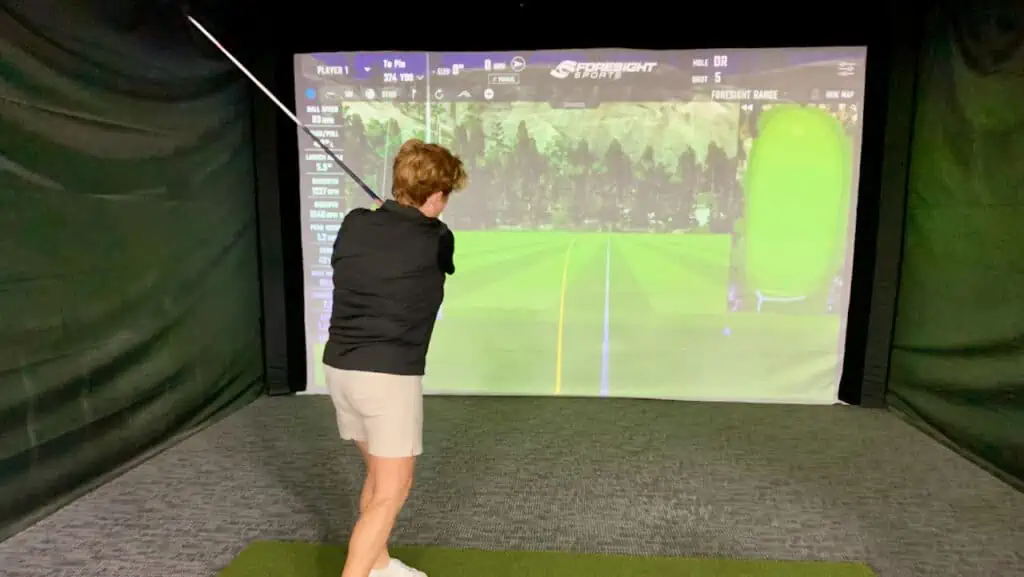
Local Fitters
I prefer to support local golf fitters to reduce the overall cost of custom fitted golf clubs. A local fitter will not try aggressively upselling you on golf equipment in their store, and it’s easier to build a long-term relationship with a local.
Although I respect the work of sizable corporate operations like Golf Tec, PGA TOUR SuperStore, and Golf Galaxy, their ultimate mission is to sell golf clubs. Therefore, you may experience a fitter pushing a set of clubs onto you that aren’t in your budget simply because they need to reach their sales targets.
I do not hold that against them, but I feel that they focus on my benjamins before helping me identify the best tools for my game. In my experience, a local fitter is happy to provide all the necessary insight during the analysis before sending you out on your own journey to find the ideal clubs for the lowest price.
Buy New Golf Clubs Before or After a Custom Golf Club Fitting?
You should buy new clubs after a custom golf club fitting when you know what specs are ideal for your game. Opting for a new golf club set before the fitting is a risky endeavor because the fitter may get you to dump them if the specs do not fit your game.

Frequently Asked Questions
Can I get fitted for clubs I already have?
Yes, you can get fitted for golf clubs you already own. Take your current golf club set with you for your golf fitting. Let a fitting expert determine if the specs suit your golf game. If not, they will identify clubs that match your optimal stipulations.
How do I prepare for a golf fitting?
It’s best practice to pack your golf bag, shoes, and apparel for your fitting, and identify what you want to achieve from the fitting. These items will help you get a more accurate feel.
Can I get second-hand clubs fitted?
Yes, it is possible to get second-hand custom fit golf clubs. However, the cost of customizing them might not warrant taking this route.
Final Thoughts
After examining how much do fitted golf clubs cost, I’m convinced that it is a worthwhile process for all amateurs. It gives you insight into the optimal specs for your game, including gapping, clubface design, shaft length, flex, and weight.
You can get yourself a complete bag fitting for approximately $300 or get fitted for a single golf club for between $100 to $175. Although you can visit a host of impressive operations like GolfTec or Golf Galaxy, I prefer supporting my local businesses and building a long standing relationship with a fitter.

